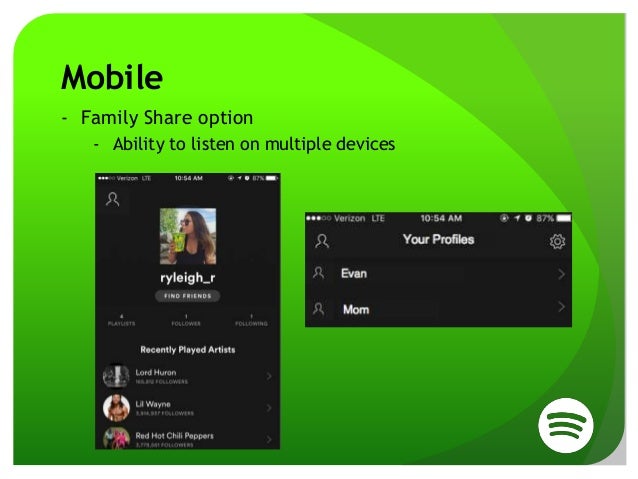- Once lured to the free music buffet, users of the ad-supported tier are firmly in the marketing loop for the €9.99-a-month premium tier (which has no ads and much better functionality.
- Spotify’s mobile app icon along with other apps’ icons on a smartphone display. Spotify’s business model mutually depends on the company’s generic competitive strategy (Porter’s framework) and intensive growth strategies (Ansoff Matrix), which facilitate international expansion of music streaming operations.
- Alex is responsible for overseeing the company’s consumer growth strategy globally, across Free and Premium offerings. This includes direct-to-consumer subscriptions revenue, global marketing, local market teams, international expansion, partnerships, payments, CS and Freemium R&D teams.
- Value Proposition - Consumer. Free Subscription – Unlimited free usage of Spotify with advertisements, would provide first-hand experience to the customers. Premium Subscription – Need to be offered at a price lower than that of Apple Music to convert as many as possible. The decrease in family pack price should be significant as it would help in pulling more of the target customers at once.
Many of us use Spotify in today’s world but how many of us can identify the ways the music streaming service competes with traditional and online music providers? In this blog post, I will explore these above-mentioned methods by analyzing different aspects of the marketing mix with respect to Spotify.
Advantages of Spotify. We are going to list the pros of Spotify first. Spotify Free and Spotify Premium. Let’s start with the fact that Spotify offers free and paid membership. Logically, with Spotify free, you won’t be able to enjoy many features that Premium option offers. You might own a business and can’t exactly see how Spotify would fit into your marketing strategy, but there is always a way to get free Spotify plays that can help your organization in some form or fashion. Let’s say that you run a nonprofit of some kind, related to a cause like an environment or domestic violence.
As a brief introduction, a marketing mix is a set of variables or components which fit together to create a marketing strategy (Chaffey and Ellis-Chadwick, 2016). Examples of marketing mixes are the 4 P’s – Product, Price, Place, and Promotion (McCarthy, 1960) and the 7 P’s which include the previously mention 4 plus the addition of People, Process, and Physical Evidence (Booms and Bitner, 1981). I will give Spotify specific examples of the 4 P’s.
Product
The core product Spotify is the music which is available on their platform. The content is digital which means consumers are able to access their product on their mobile devices and depending on the type of account the consumer has, they also have the option to download the content for offline consumption. Whereas traditional forms of music consumption (e.g. Cd’s and Cassettes tapes) consumers were required to purchase specific equipment (e.g. CD and Cassette players).
Different account types offered by Spotify provide different experiences to the consumers, for example, a Premium (subscription) account allows the consumer to download as well as the ability to pick and choose the type of content they would like to hear as opposed to the Free accounts are only able to listen to content online and are only able to listen to content in a ‘shuffle’ mode.
Price

Spotify offers consumers the option to listen to their content for free or pay a subscription fee which can be canceled at any point for the premium account. The first revenue model is that of a freemium, this requires the user to listen to ads every couple of songs which provide revenue to Spotify.

Place
Traditional places a consumer may find or purchase music content would have been at a music store, record store, or even a general electronics store (e.g. JBHiFi). Spotify, however, is solely online making the content easier to access for consumers.
Promotion
Spotify has a varied approach to promotion. The company has strong ties with social media platform Facebook with many advertisements shown not only in the advertisement sidebar but also sponsored posts showing up in consumers new feeds. Originally word-of-mouth played a big part in Spotify’s growth which stemmed from its US launch which employed ‘Beta’ testing as a way to gain interest and potential new customers (Chaffey and Ellis-Chadwick, 2016).
References
Chaffey, D., Ellis-Chadwick, F. (2000). Digital Marketing Strategy, Implementation, and Practice (6th ed.). United Kingdom: Pearson.
Spotify Free Premium Advantages Marketing Strategy In Marketing
Spotify. (2017). Premium. Retrieved September 24, 2017, from https://www.spotify.com/au/premium.
Spotify Free Premium Advantages Marketing Strategy Marketing
Spotify. (2017). Free. Retrieved September 24, 2017, from https://www.spotify.com/au/free.